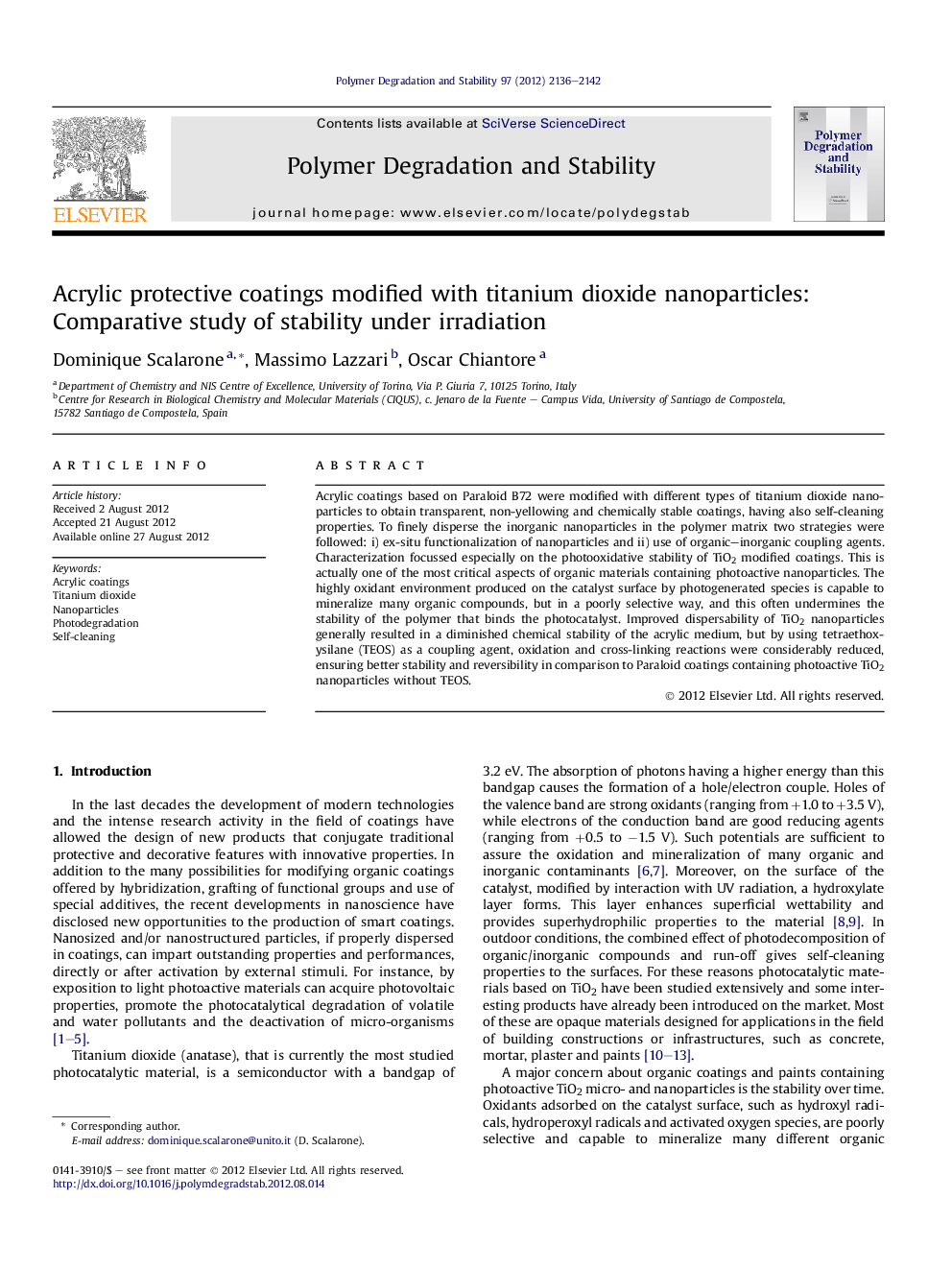| Article ID | Journal | Published Year | Pages | File Type |
|---|---|---|---|---|
| 5202557 | Polymer Degradation and Stability | 2012 | 7 Pages |
Abstract
Acrylic coatings based on Paraloid B72 were modified with different types of titanium dioxide nanoparticles to obtain transparent, non-yellowing and chemically stable coatings, having also self-cleaning properties. To finely disperse the inorganic nanoparticles in the polymer matrix two strategies were followed: i) ex-situ functionalization of nanoparticles and ii) use of organic-inorganic coupling agents. Characterization focussed especially on the photooxidative stability of TiO2 modified coatings. This is actually one of the most critical aspects of organic materials containing photoactive nanoparticles. The highly oxidant environment produced on the catalyst surface by photogenerated species is capable to mineralize many organic compounds, but in a poorly selective way, and this often undermines the stability of the polymer that binds the photocatalyst. Improved dispersability of TiO2 nanoparticles generally resulted in a diminished chemical stability of the acrylic medium, but by using tetraethoxysilane (TEOS) as a coupling agent, oxidation and cross-linking reactions were considerably reduced, ensuring better stability and reversibility in comparison to Paraloid coatings containing photoactive TiO2 nanoparticles without TEOS.
Related Topics
Physical Sciences and Engineering
Chemistry
Organic Chemistry
Authors
Dominique Scalarone, Massimo Lazzari, Oscar Chiantore,
